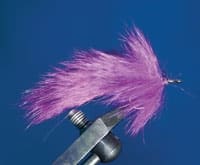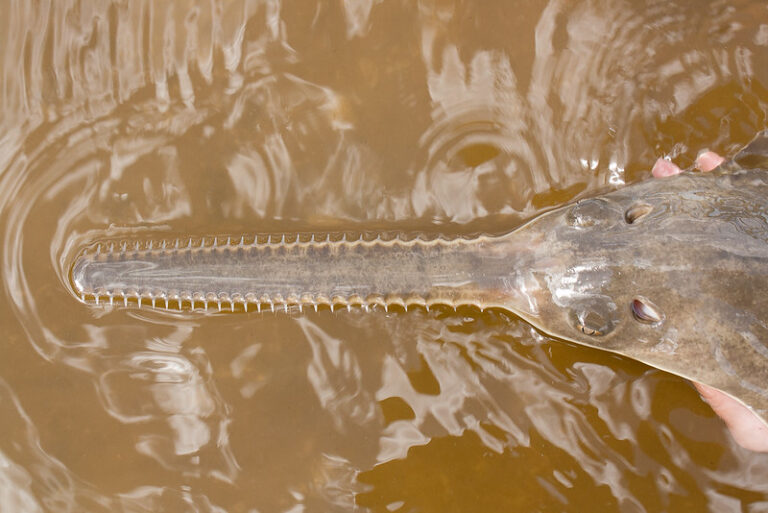
Like so many others, I typically copied what was available in fly shops and in books when I first began tying tarpon patterns over 30 years ago. That was during an era when there wasn’t a lot of information readily available. Since those early days, however, I’ve learned a few tricks and have been lucky enough to tie for a few different shops and several guides.
Back in the early years, I remember coming across some of the original tarpon patterns that used rabbit strips for the tail. These flies looked great, and they caught fish. But they also fouled easily, and I avoided them for that reason. Tiers eventually began using a mono loop to prevent the tail from wrapping around the hook. The solution worked, but I never took to it and rarely used rabbit strips.
That changed a few years ago, however. I found a way to make a rabbit-strip tail completely foul-proof without the mono loop.
Tarpon fishing had progressively become tougher and tougher over the years because of increased pressure. The fish became selective about what they ate, and for that reason, most tarpon flies became smaller. I was spending the majority of my time fishing the backcountry, and I’d learned that flies with weed guards were an absolute necessity. That was the beginning of the evolution of the Swamp Rabbit.
With a wire weed guard, it’s a bit unusual but very effective; you can fish it in any situation, and it’s virtually snag-free. The fish never seem to notice the weed guard at all, and in the past three years, this small, compact fly has taken numerous tarpon from Key West up into the backcountry.
My favorite colors in the backcountry are typically purple-and-black or red-and-black. In clear water, lighter colors such as chartreuse-and-gray or pink-and-tan get the nod. Umpqua Feather Merchants now produce the Swamp Rabbit in five colors, and it can be stocked in any shop.
**
Materials**
Hook: 2/0 Owner Aki
Thread: Danville flat, waxed nylon
Tail: Rabbit strip over sparse bucktail, both of the same color
Flash: Pearl Flashabou
Body: Wound rabbit strip with Schlappen or wide saddle-hackle collar
Weed guard: #5 Malin Hard Wire (coffee)
Head: Built-up thread with painted eyes
Finish: Flexcoat or other heavy rod-builder’s finish
****
Tying Instructions
| Step 1: With black thread, tie in a small amount of purple bucktail just before the bend of the hook. The bucktail replaces the usual mono loop and prevents the rabbit-strip tail from fouling. A small amount of Flashabou is then tied in on top of the bucktail and extends just past it. |

| | Step 2: Tie in a short piece of purple rabbit strip on top of the bucktail. The rabbit strip should not be longer than 3 inches.|

| | Step 3: Place a tiny drop of Super Glue on top of the thread, and then tie in another purple rabbit strip. Wrap it forward to within 3/8-inch of the hook eye.|

| | Step 4: Bend a short piece of #5 wire into itself to form the anchor; then, tie it in under the hook shank with the end sticking out. The folded portion of the wire is about 1/8-inch in length and completely covered with thread.|

| | Step 5: To form a collar, tie in a single, wide black saddle hackle or Schlappen where the rabbit body ends; use as much of the fluff as possible. Once the collar is finished, build up a large head of thread. Paint eyes on the head and seal with a bit of Super Glue. After the eyes are painted and finished, bend the wire into place, cutting it just in front of the barb. Bend the end of the wire down slightly.|

|









